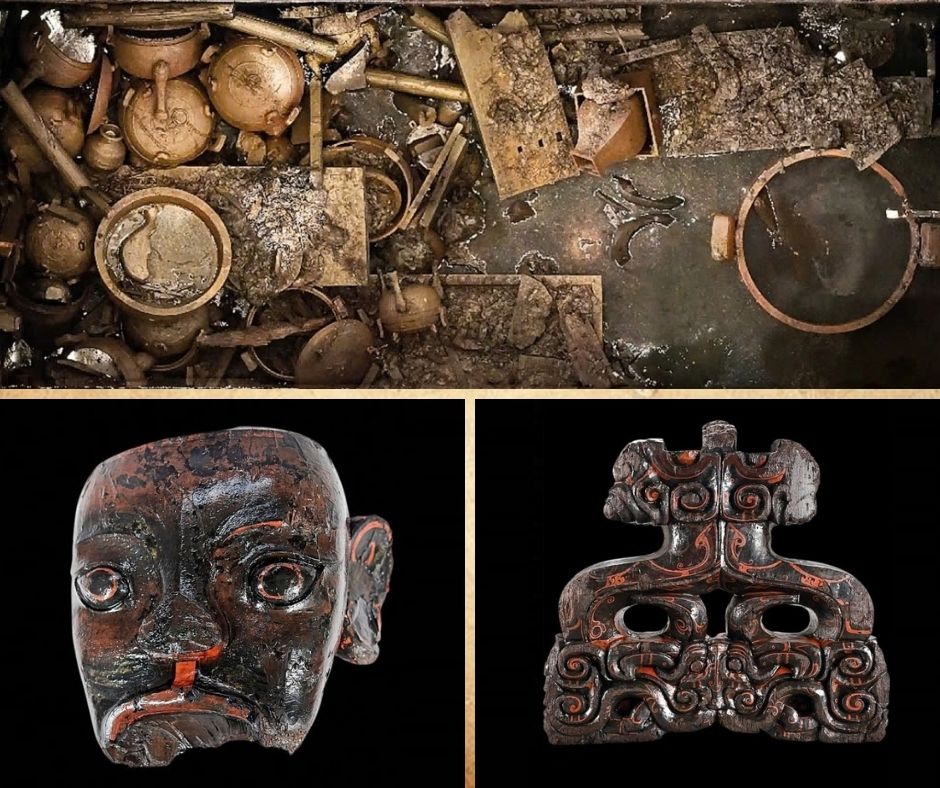These rare treasures could paint a better picture of China before it unified

Crammed with exquisite objects, a 2,200-year-old tomb is revealing fresh insights into a period of upheaval and cultural flourishing that forged modern China.
The site of Wuwangdun lies near the city of Huainan in eastern China. The site was a few miles from the last capital of…
Archaeologists working on the site of Wuwangdun, a cemetery complex in eastern China’s Anhui Province, have not made any statements on the tomb’s occupant. Unofficially, however, Chinese scholars consider the tomb was likely built for Kaolie, one of the last kings of Chu. Kaolie ruled Chu during the tumultuous endgame of the Warring States period (475-221 B.C.).
The tomb, whose excavation began in 2020, is the largest and most complex Chu-era burial ever found. Gong Xicheng, head of the archaeological team, said the findings “enhance our understanding of the wider political landscape of the Chu just before the establishment of the Qin dynasty.”
(Who was the Qin emperor behind the terra-cotta warriors?)
Last states standing
Spanning three centuries, the Warring States period marks the time when the seven autonomous states of Chu, Qin, Han, Wei, Zhao, Qi, and Yan all fought each other in a brutal war of elimination.
The Chu state’s King Kaolie reigned from 262 to 238 B.C., decades before the Qin finally subdued the Chu (one of their stronger opponents) to create a unified China. Radiocarbon dating reveals that the tomb was built around 220 B.C., when Chu was being absorbed into the new Qin state.
Characterized by upheaval, the Warring States era was also a time of economic and cultural expansion, when the ideas of Confucianism and Taoism were flourishing.
(This religious revolt nearly toppled China’s last imperial dynasty.)
Chu craftsmen excelled in fine lacquerware, bronze casting, and silk embroidery. The Wuwangdun tomb is characteristic of such craftsmanship at a moment when the Chu state, while excelling culturally, was sliding toward military defeat. So far, more than a thousand artifacts have been discovered in the tomb, including bronze ritual vessels and musical instruments.
Over a thousand objects were found in the tomb at Wuwangdun in eastern China, including three-legged bronze cauldrons known as ding, several of which can be seen in this image. Begun in 2020, the excavation of what is believed to be a royal Chu burial is ongoing.
Xinhua
Margarete Prüch, a post-doctoral a research associate at Heidelberg University, Germany, and a specialist in Chinese tombs and lacquerware, reported that Chinese colleagues considered the tomb to be that of King Kaolie. Prüch, who was not involved in the excavation, also supports that view.
(The eighth wonder of the ancient world may have an untouched tomb.)
“The tomb’s structure is highly sophisticated,” Prüch told History. Steps lead down to a central chamber and eight side chambers, which held the artifacts. Ink inscriptions on the chambers’ lids explain each of their functions; one has been revealed to be dedicated to music.
Gong is confident that with further advanced technology, the tomb will provide “an overall picture” of the Chu state a few decades before its final defeat.
(He was the first pharaoh found intact in his tomb—but he wasn’t alone.)
Objects found include lacquerware (including this sculpture), bronzes, and musical instruments.
Xinhua
This story appeared in the November/December 2024 issue of National Geographic History magazine.

